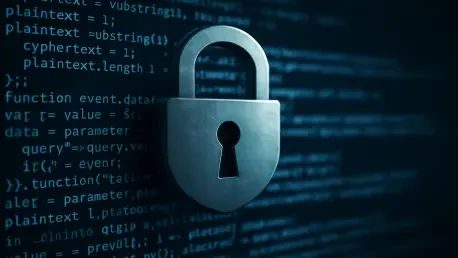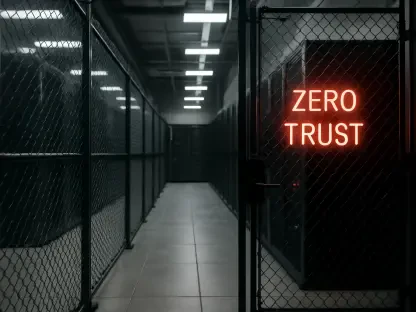As the digital landscape evolves at a breakneck pace in 2025, cybersecurity stands at a pivotal crossroads where groundbreaking technologies collide with increasingly sophisticated threats, challenging organizations to rethink their approach to data protection. Across industries like finance and healthcare, the urgency to safeguard sensitive information has never been more pronounced, with adversaries exploiting vulnerabilities at an alarming scale. Artificial Intelligence (AI) and quantum computing are not only reshaping attack vectors but also redefining defensive strategies, pushing the boundaries of what is possible in securing digital ecosystems. This exploration delves into the most pressing challenges and innovative solutions shaping the current cybersecurity arena, shedding light on how businesses and governments can stay ahead in a world where traditional defenses are rapidly becoming obsolete. From AI-driven threats to the promise of zero-trust architectures, the path forward demands a blend of foresight, adaptability, and resilience to navigate an ever-shifting threat landscape.
Emerging Threats on the Horizon
AI as a Double-Edged Sword
The transformative power of AI in cybersecurity reveals a stark duality in 2025, acting as both a formidable ally for defenders and a dangerous tool for attackers. By processing vast datasets at unprecedented speeds, AI enables security teams to identify anomalies and potential threats in real time, a feat far beyond human capacity. This capability allows for swift responses to incidents that would otherwise go undetected, fundamentally enhancing threat detection across complex networks. However, the same technology is being harnessed by cybercriminals to orchestrate highly automated attacks, ranging from personalized phishing schemes to adaptive malware that evolves to bypass even the most advanced detection systems. The challenge lies in striking a balance between leveraging AI’s strengths and mitigating its misuse, ensuring that defensive applications remain a step ahead of malicious innovations.
Equally concerning is the need for robust governance to address the inherent risks of AI in cybersecurity applications, particularly around issues like algorithmic bias that can lead to false positives or missed threats. Experts emphasize a shift toward practical, outcome-focused AI tools rather than solutions driven by hype, advocating for systems that prioritize measurable results over flashy promises. This approach requires organizations to invest in transparent AI frameworks that can be audited and refined continuously to adapt to emerging attack patterns. As AI becomes more integrated into security operations, the focus must remain on building trust in these systems while simultaneously preparing for adversaries who exploit the same technology to create sophisticated threats like deepfakes or automated social engineering campaigns. The stakes are high, and the margin for error is razor-thin in this rapidly evolving arena.
Quantum Computing’s Encryption Challenge
Quantum computing emerges as a profound disruptor in 2025, posing a significant risk to current encryption standards that underpin global data security. With the potential to crack widely used cryptographic methods in mere minutes, this technology threatens to expose sensitive information, particularly in sectors handling critical data like government and finance. Nation-state actors, already pouring substantial resources into quantum advancements, heighten the urgency of this issue, as their capabilities could undermine the very foundation of secure communications. The implications are vast, requiring immediate action to protect digital infrastructures from a threat that is no longer theoretical but increasingly tangible as research progresses at an accelerated pace.
To counter this looming danger, there is a pressing need for organizations to transition to quantum-resistant cryptography, aligning with standards set by authoritative bodies like the National Institute of Standards and Technology (NIST). This involves auditing existing systems to identify vulnerabilities and implementing post-quantum algorithms that can withstand the computational power of quantum machines. The transition is not merely a technical upgrade but a strategic imperative, as delays could leave entire industries exposed to catastrophic breaches in the near future. Collaboration between public and private sectors is essential to accelerate the adoption of these new standards, ensuring that the global cybersecurity community remains proactive rather than reactive. The race to secure data against quantum threats is on, and the window of opportunity to act is narrowing swiftly.
Defensive Strategies for Resilience
Zero-Trust Architecture as a Foundation
Zero-trust architecture has solidified its position as a cornerstone of cybersecurity in 2025, fundamentally altering how trust and access are managed within digital environments. Unlike traditional models that assume internal users or devices are safe, zero-trust operates on the principle that no entity is inherently trustworthy, enforcing strict, multi-layered access controls to limit the blast radius of potential breaches. This approach proves especially critical in high-stakes industries like healthcare, where data integrity is paramount, and even a minor compromise can have devastating consequences. By requiring continuous verification, zero-trust minimizes the risk of lateral movement by attackers, ensuring that security is embedded at every touchpoint of the network.
Beyond access controls, the effectiveness of zero-trust hinges on complementary practices like continuous monitoring and regular penetration testing to identify and address weaknesses before they are exploited. This proactive stance reflects a broader shift toward resilience, acknowledging that breaches are not a matter of if but when, and preparing accordingly. Organizations adopting zero-trust must also integrate it with existing security frameworks to create a cohesive defense strategy that evolves with emerging threats. Regulatory pressures, such as those from the EU’s NIS2 Directive, further underscore the importance of this model, pushing firms to prioritize robust, audit-ready systems. As the threat landscape grows more complex, zero-trust offers a scalable solution that aligns with the dynamic nature of modern cybersecurity challenges.
Tackling Supply Chain Risks and Human Error
Supply chain vulnerabilities persist as a significant concern in 2025, with attacks targeting third-party vendors expected to escalate as adversaries seek the path of least resistance. These weak links can unravel even the most fortified systems, as seen in past high-profile incidents that exposed interconnected risks across industries. To mitigate this, organizations must conduct rigorous vendor assessments, ensuring that partners adhere to stringent security standards, while exploring technologies like blockchain for transparent tracking of goods and data. Diversifying supply chains to avoid over-reliance on single providers also strengthens resilience, creating redundancies that can absorb the impact of a breach without crippling operations.
At the same time, human error remains a critical weak point, often exploited through increasingly sophisticated social engineering tactics amplified by AI. Employees, particularly in remote or hybrid work environments, must be equipped with tailored training programs that include simulated phishing exercises to build awareness and reflexes against deception. Beyond one-off sessions, continuous education is vital to keep pace with evolving threats, fostering a culture of vigilance at every level of the organization. Addressing both supply chain risks and human factors requires a holistic approach, blending technology with human-centric strategies to close gaps that attackers relentlessly target. Only through such integrated efforts can businesses hope to fortify their defenses against persistent and adaptive dangers.
Market Trends and Future Outlook
Cybersecurity Industry Growth and Innovation
The cybersecurity market in 2025 is experiencing a remarkable surge, with projections indicating a compound annual growth rate of over 15% through 2032, fueled by the escalating complexity of threats and rapid technological advancements. This growth reflects not only the severity of the challenges but also the immense opportunity for innovation, as organizations scramble to protect their digital assets. Unified platforms that seamlessly integrate endpoint, cloud, and network security are becoming the gold standard, offering a comprehensive shield against multifaceted attacks. Such solutions reduce the silos that often plague security operations, enabling a more agile and responsive defense posture in an era where speed is critical.
Driving this market expansion is the strategic investment in AI-driven orchestration and machine learning, which are revolutionizing how threats—particularly insider risks—are detected and mitigated. These technologies allow for predictive analytics that anticipate breaches before they occur, shifting the paradigm from reaction to prevention. As businesses allocate larger budgets to cybersecurity, the focus is on scalable, integrated tools that can adapt to diverse environments, from small enterprises to sprawling multinational networks. This trend underscores a broader recognition that fragmented defenses are no longer viable, pushing the industry toward holistic systems that embed security into every layer of operation. The momentum of this market signals a future where innovation must keep pace with unrelenting adversarial tactics.
Navigating Regulatory and Strategic Shifts
Regulatory landscapes are tightening globally in 2025, with frameworks like the EU’s NIS2 Directive and U.S. federal guidelines imposing stricter data protection requirements on organizations across sectors. These mandates demand continuous monitoring and audit-ready systems, with substantial penalties for non-compliance acting as a powerful motivator for adherence. For many businesses, aligning with these regulations is not just about avoiding fines but also about building trust with customers and partners who increasingly prioritize data security. The push for compliance is reshaping how security strategies are formulated, embedding accountability into the core of operations.
Strategically, the emphasis is on proactive measures that anticipate rather than react to threats, a shift driven by the realization that static defenses are insufficient against dynamic adversaries. Investments in intelligence-driven operations, such as AI-enhanced threat hunting, are becoming standard as firms seek to outmaneuver attackers at every turn. Collaboration between public and private entities also plays a crucial role, fostering the exchange of threat intelligence to bolster collective defenses. As the cybersecurity landscape continues to evolve, the interplay of regulatory pressures and strategic foresight will define how effectively organizations can protect their digital frontiers, ensuring they remain resilient amid constant change.









